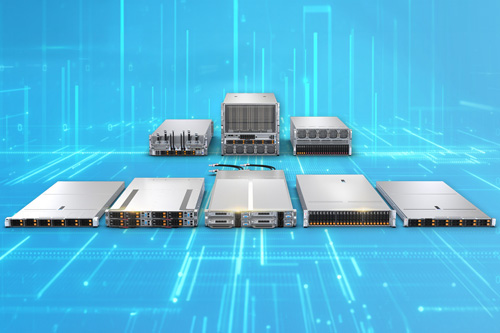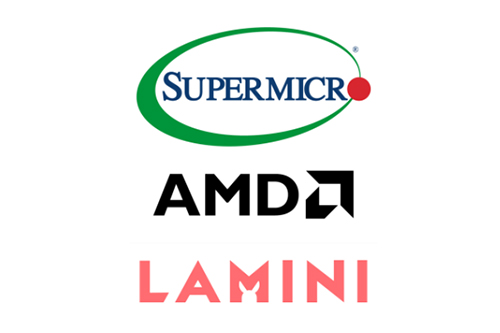The recent release of AMD’s 5th generation processors—formerly codenamed Turin—also heralded the introduction of the company’s “Zen 5” core architecture.
“Zen” is AMD’s name for a design ethos that prioritizes performance, scalability and efficiency. As any CTO will tell you, these 3 aspects are crucial for success in today’s AI era.
AMD originally introduced its “Zen” architecture in 2017 as part of a broader campaign to steal market share and establish dominance in the all-important enterprise IT space.
Subsequent generations of the “Zen” design have markedly increased performance and efficiency while delivering ever-thinner manufacturing processes.
Now and Zen
Since the “Zen” core’s original appearance in AMD Ryzen 1000-series processors, the architecture’s design philosophy has maintained its focus on a handful of vital aspects. They include:
- A modular design. Known as Infinity Fabric, it facilitates efficient connectivity among multiple CPU cores and other components. This modular architecture enhances scalability and performance, both of which are vital for modern enterprise IT infrastructure.
- High core counts and multithreading. Both are common to EPYC and Ryzen CPUs built using the AMD “Zen” core architecture. Simultaneous multithreading enables each core to process 2 threads. In the case of EPYC processors, this makes AMD’s CPUs ideal for multithreaded workloads that include Generative AI, machine learning, HPC and Big Data.
- Advanced manufacturing processes. These allow faster, more efficient communication among individual CPU components, including multithreaded cores and multilevel caches. Back in 2017, the original “Zen” architecture was manufactured using a 14-nanometer (nm) process. Today’s new “Zen 5” and “Zen 5c” architectures (more on these below) reduce the lithography to just 4nm and 3nm, respectively.
- Enhanced efficiency. This enables IT staff to better manage complex enterprise IT infrastructure. Reducing heat and power consumption is crucial, too, both in data centers and at the edge. The AMD “Zen” architecture makes this possible by offering enterprise-grade EPYC processors that offer up to 192 cores, yet require a maximum thermal design power (TDP) of only 500W.
The Two-Fold Path
The latest, fifth generation “Zen” architecture is divided into two segments: “Zen 5” and “Zen 5c.”
“Zen 5” employs a 4-nanometer (nm) manufacturing process to deliver up to 128 cores operating at up to 4.1GHz. It’s optimized for high per-core performance.
“Zen 5c,” by contrast, offers a 3nm lithography that’s reserved for AMD EPYC 96xx, 97xx, 98xx, and 99xx series processors. It’s optimized for high density and power efficiency.
The most powerful of these CPUs—the AMD EPYC 9965—includes an astonishing 192 cores, a maximum boost clock speed of 3.7GHz, and an L3 cache of 384MB.
Both “Zen 5” and “Zen 5c” are key components of the 5th gen AMD EPYC processors introduced earlier this month. Both have also been designed to achieve double-digit increases in instructions per clock cycle (IPC) and equip the core with the kinds of data handling and processing power required by new AI workloads.
Supermicro’s Satori
AMD isn’t the only brand offering bold, new tech to harried enterprise IT managers.
Supermicro recently introduced its new H14 servers, GPU-accelerated systems and storage servers powered by AMD EPYC 9005 Series processors and AMD Instinct MI325X Accelerators. A number of these servers also support the new AMD “Turin” CPUs.
The new product line features updated versions of Supermicro’s vaunted Hyper system, Twin multinode servers, and AI-inferencing GPU systems. All are now available with the user’s choice of either air or liquid cooling.
Supermicro says its collection of purpose-built powerhouses represents one of the industry’s most extensive server families. That should be welcome news for organizations intent on building a fleet of machines to meet the highly resource-intensive demands of modern AI workloads.
By designing its next-generation infrastructure around AMD 5th Generation components, Supermicro says it can dramatically increase efficiency by reducing customers’ total data-center footprints by at least two-thirds.
Enlightened IT for the AI Era
While AMD and Supermicro’s advances represent today’s cutting-edge technology, tomorrow is another story entirely.
Keeping up with customer demand and the dizzying pace of AI-based innovation means these tech giants will soon return with more announcements, tools and design methodologies. AMD has already promised a new accelerator, the AMD Instinct MI350, will be formally announced in the second half of 2025.
As far as enterprise CTOs are concerned, the sooner, the better. To survive and thrive amid heavy competition, they’ll need an evolving array of next-generation technology. That will help them reduce their bottom lines even as they increase their product offerings—a kind of technological nirvana.
Do More:
- Learn even more about the AMD Zen core architecture.
- Get to know the 5th Gen AMD EPYC server processors.
- Read a new AMD white paper: 5th Gen AMD EPYC processor architecture.
Watch a related video:












